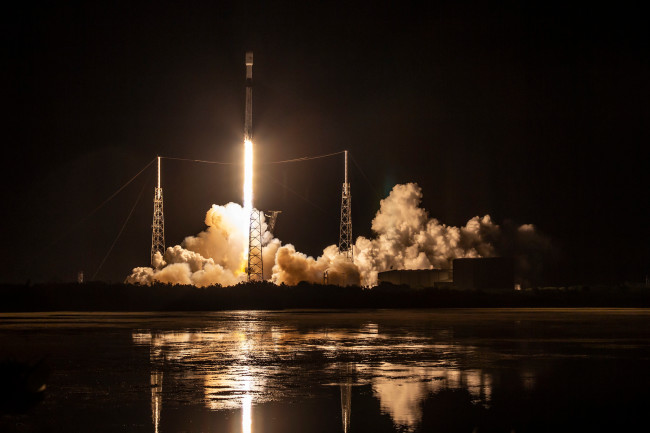The third and most recent launch includes one experimentally darkened satellite. Astronomers have yet to see whether it’s an effective solution.
Monday’s launch, which took place at 21.19 EST was the third launch of Starlink satellites from Cape Canaveral Air Force Station, Florida. It brought the total number of deployed Starlink satellites to 180.
Placed into a 290km-high orbit, the satellites are currently being activated and checked out. Once complete, the onboard thrusters will gradually lift them to their 550km-high operational orbits.
Any satellites that fail the checks will be left in the lower orbit, where the faint traces of the Earth’s atmosphere will eventually cause them to re-enter and burn up, thus reducing space debris.
The satellites were launched by a SpaceX Falcon 9 rocket. Its first stage returned to Earth and landed on the whimsically named Of Course I Still Love You drone ship, which was stationed in the Atlantic.
To address astronomers’ concerns that the satellites reflect sunlight and ruin scientific observations, this latest batch have been given a darker, less reflective coating.





























